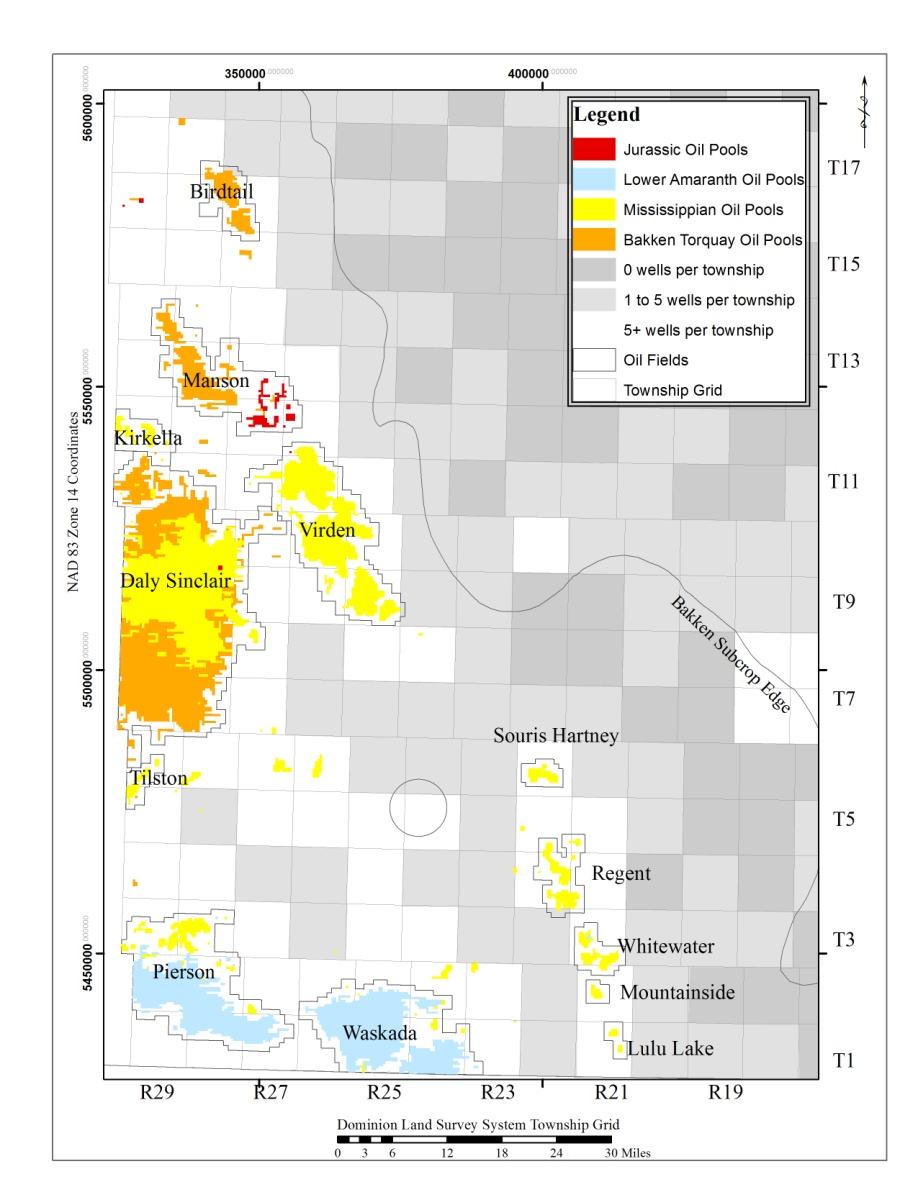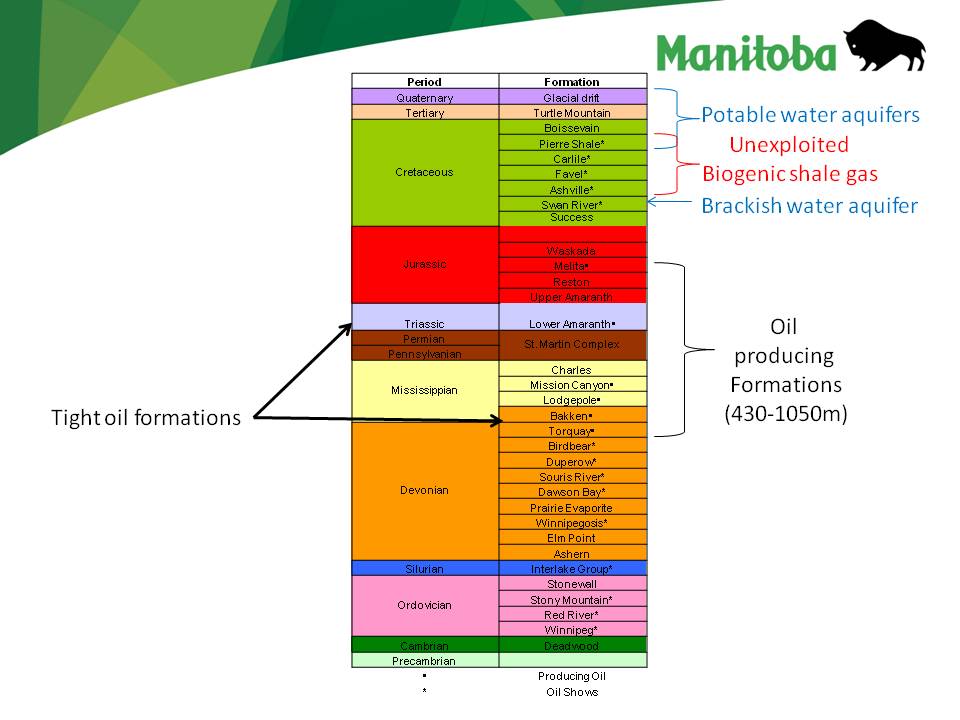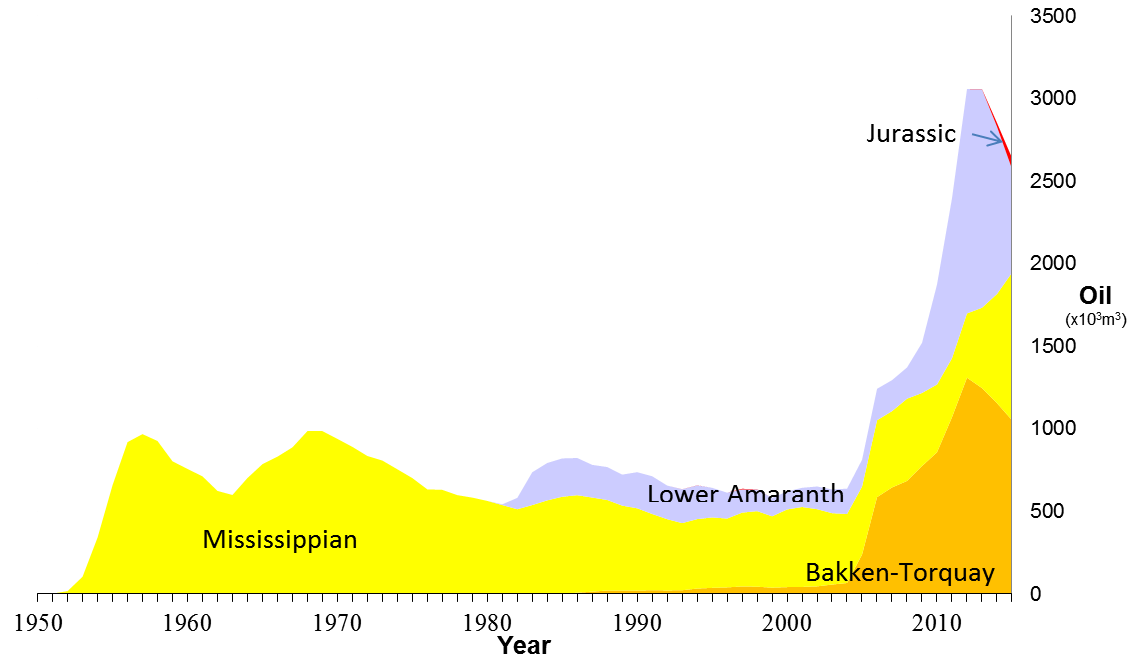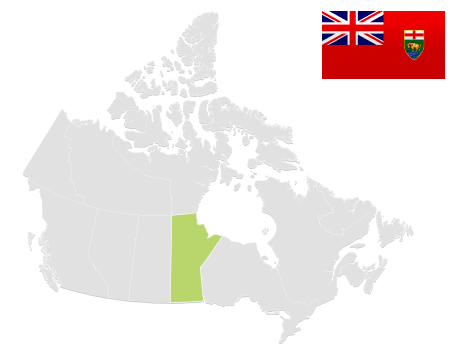
A product of the Energy and Mines Ministers’ Conference
Manitoba’s Oil and Gas Resources

- N/A TRILLION CUBIC FEET
Technically Recoverable Natural Gas

- N/A MILLION BARRELS
Technically Recoverable Crude Oil

- 0 BILLION CUBIC FEET/DAY
Total Natural Gas Production (2013)- 0 BILLION CUBIC FEET/DAY
Shale/Tight Gas Production (2013)
- 0 BILLION CUBIC FEET/DAY

- 0.05 MILLION BARRELS/DAY
Total Crude Oil Production (2013)- 0.04 MILLION BARRELS/DAY
Tight Oil Production (2013)
- 0.04 MILLION BARRELS/DAY
Source:
- Resource estimates: not available
- Production estimates: National Energy Board (may not align with provincial data due to differences in methodology)
Geography
Manitoba has known shale and tight oil plays in the Williston Basin. The Williston Basin is an intracratonic sequence of sedimentary rocks covering parts of North Dakota, South Dakota, Montana, Saskatchewan and southwestern Manitoba. All Manitoba’s oil and gas resources are presently sourced from the Williston basin in southwestern Manitoba from Jurassic to Devonian aged rocks within the subcrop of the Bakken formation.
Potential for further tight and shale hydrocarbon resources exist throughout this sedimentary sequence from shallow Cretaceous shales containing biogenic gas to deep oil-bearing Ordovician sandstones. Further tight and shale hydrocarbon potential exists in the Hudson Bay Lowlands (Figures 1 and 2).

Figure 1: Manitoba’s Oil Fields January 1, 2016
Source: Manitoba Mineral Resources
Text version
Figure 1: Manitoba’s Oil Fields January 1, 2016
Map of known oil fields in Manitoba, as of January 1, 2016.

Figure 2: Williston Basin Stratigraphic Column
Source: Manitoba Mineral Resources
Text version
Figure 2: Williston Basin Stratigraphic Column
Table showing the geological composition of the Williston Basin which highlights the tight oil formations in the Lower Amaranth and the Bakken-Torquay.
Geology
There are currently 13 active oil fields in Manitoba (Figure 1). These fields produce from the Triassic Melita, the Reston formations and the Upper Amaranth (red), the Lower Amaranth formation (blue), the Mississippian Mission Canyon and Lodgepole formations (yellow) and the Devonian Bakken-Torquay formations (orange). Of these formations, the Lower Amaranth and the Bakken-Torquay formations are considered tight oil plays.
The Lower Amaranth can be split up into two units, both of which are productive: an upper shale unit and a lower unit with productive lenticular sandstones interbedded with siltstones. Known Lower Amaranth oil pools cover 37,564 hectares with an average thickness of 17.5 metres in the lower sandy unit. In 2015, 630,565 cubic metres of oil was recovered from the Lower Amaranth in Manitoba.
The composition of the middle Bakken-Torquay reservoir ranges from siltstones to sandstones. Known Bakken-Torquay oil pools cover 83,020 hectares and have an average thickness of two metres. In 2015,1.05 million cubic metres of oil was recovered from the Bakken-Torquay formation in Manitoba.
Cretaceous shales cover an area of 50,000 square kilometres in Manitoba. These shales have an average thickness of 250 metres and are known to contain biogenic gas; however this gas is presently not being exploited.
No reserve estimates are currently available for Manitoba.
Exploration and Production
Traditional oil production first started in Manitoba in 1951 in the Mississippian formation. Tight oil production began with the Lower Amaranth in 1980, and there are now two tight oil-producing formations in Manitoba: the Lower Amaranth and the Bakken-Torquay. Both these formations produced low volumes of oil until horizontal drilling became common in 2005. By 2006, tight oil production exceeded conventional oil production, and current available data suggests Manitoba oil production peaked in 2012 (Figure 3).

Figure 3: Manitoba Historical Production by Formation
Source: Manitoba Mineral Resources
Text version
Figure 3: Manitoba Historical Production by Formation
Graph showing oil production by formation in Manitoba between 1951 and 2014.
While development is continuing through an increase in the density of horizontal wells, exploration is focused primarily on the Manson Field area and north of the Birdtail field. Known reservoirs are being targeted, with little to no emphasis on deep drilling or shallow shale gas exploration. Low oil prices throughout 2015 and 2016 have resulted in a dramatic downturn in new exploration.
Regulation
The Petroleum Branch (Branch) of Manitoba Mineral Resources administers provisions under The Oil and Gas Act and The Oil and Gas Production Tax Act relating to exploration, development, production and transportation of oil and gas.
The Branch develops, recommends, implements and administers policies and legislation to provide for the sustainable development of Manitoba's oil and gas resources. The Branch deals with matters relating to well spacing, production allowables, pool designations, saltwater disposal, enhanced recovery projects and unitization. The Branch publishes several reports each year, providing the public, industry and government with information on the petroleum industry in Manitoba.
The Branch is comprised of four Sections: Administration, Geology, Engineering & Inspection and Digital Information.
One of the major functions of the Petroleum Branch is to encourage exploration and development of the province's crude oil and natural gas resources in an orderly, safe and efficient manner.
All oil and gas development in the province is regulated under The Drilling and Production Regulation.
Although there is some potential, shale gas development is not occurring within the province. However, tight non-conventional oil development with multi-stage fracturing of horizontal wells has proven to be a game changer in Manitoba, resulting in extensive well drilling since 2007. In 2015, oil and gas companies will be required to provide standardized information on their hydraulic fracturing activities. The Petroleum Branch has signed an agreement for the use of FracFocus and will be requiring the submission and disclosure of hydraulic fracturing fluid components starting in the fall of 2015.
Regulation of Exploration
All activities related to oil and gas exploration are prescribed in Parts 3, 4, 5, 6, 9, 11, 12 and 13 of The Drilling and Production Regulation under the authority of The Oil and Gas Act. Part 3 of the regulation specifies the conditions necessary for the issuance of a well licence including all items relevant to the drilling of a well such as wellbore design, material utilization, offset requirements, setback requirements, production allocations, geological data, logging specifications, environmental considerations and performance security. Minimum requirements are regulated, and the regulation provides flexibility for the addressing of new concerns and methods as they are encountered and found necessary.
The Drilling and Production Regulation requires notifications and approvals from the Petroleum Branch for events that occur during the drilling of a well, including ordinary occurrences and non-routine events such as loss of circulation or flows. An abandonment approval specifies the conditions required for implementation of a plugging program that will isolate potable ground waters and ensure protection of the environment.
Regulation of Production
All activities related to oil and gas production whether for tight or conventional oil are prescribed in Parts 2, 7, 8, 9, 10, 12, and 13 of The Drilling and Production Regulation under the authority of The Oil and Gas Act. The regulation specifies conditions required for the construction and operation of oil and gas facilities including batteries, flowlines, associated facilities, servicing equipment, enhanced oil recovery, and environmental impact prevention and remediation. Many approvals are required by regulation, and specific operations conducted at wellsites, such as recompletions and abandonments, must be pre-approved by the Petroleum Branch.
